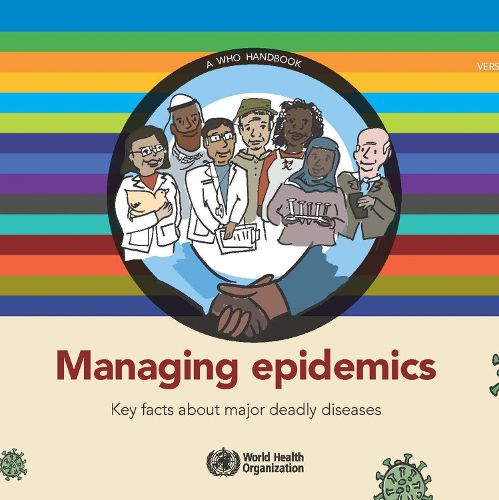Readings Newsletter
Become a Readings Member to make your shopping experience even easier.
Sign in or sign up for free!
You’re not far away from qualifying for FREE standard shipping within Australia
You’ve qualified for FREE standard shipping within Australia
The cart is loading…






This manual provides concise and up-to-date knowledge on 15 infectious diseases that have the potential to become international threats, and tips on how to respond to each of them. The 21st century has already been marked by major epidemics. Old diseases - cholera, the plague and yellow fever - have returned, and new ones have emerged - SARS, pandemic influenza, MERS, Ebola and Zika. These epidemics and their impact on global public health have convinced the world’s governments of the need for a collective and coordinated defense against emerging public health threats and accelerated the revision of the International Health Regulations (2005), entered into force in 2007. Another Ebola epidemic, another plague epidemic or a new influenza pandemic are not mere probabilities, the threat is real. Whether transmitted by mosquitoes, other insects, via contact with animals or person-to-person, the only major uncertainty is when and where they, or a new, but equally lethal epidemic, will emerge. These diseases all have the potential to spread internationally highlighting the importance of immediate and coordinated response. The diseases covered are: Ebola virus disease, Lassa fever, Crimean-Congo haemorrhagic fever, yellow fever, Zika, Chikungunya, avian and other zoonotic influenza, seasonal influenza, pandemic influenza, Middle-East respiratory syndrome (MERS), cholera, monkeypox, the plague, leptospirosis and meningococcal meningitis. Although originally developed as guidance for WHO officials, this publication is available to a wide readership including all frontline responders - communities, government officials, non-State actors and public health professionals - who need to respond rapidly and effectively when an outbreak is detected.
$9.00 standard shipping within Australia
FREE standard shipping within Australia for orders over $100.00
Express & International shipping calculated at checkout
This manual provides concise and up-to-date knowledge on 15 infectious diseases that have the potential to become international threats, and tips on how to respond to each of them. The 21st century has already been marked by major epidemics. Old diseases - cholera, the plague and yellow fever - have returned, and new ones have emerged - SARS, pandemic influenza, MERS, Ebola and Zika. These epidemics and their impact on global public health have convinced the world’s governments of the need for a collective and coordinated defense against emerging public health threats and accelerated the revision of the International Health Regulations (2005), entered into force in 2007. Another Ebola epidemic, another plague epidemic or a new influenza pandemic are not mere probabilities, the threat is real. Whether transmitted by mosquitoes, other insects, via contact with animals or person-to-person, the only major uncertainty is when and where they, or a new, but equally lethal epidemic, will emerge. These diseases all have the potential to spread internationally highlighting the importance of immediate and coordinated response. The diseases covered are: Ebola virus disease, Lassa fever, Crimean-Congo haemorrhagic fever, yellow fever, Zika, Chikungunya, avian and other zoonotic influenza, seasonal influenza, pandemic influenza, Middle-East respiratory syndrome (MERS), cholera, monkeypox, the plague, leptospirosis and meningococcal meningitis. Although originally developed as guidance for WHO officials, this publication is available to a wide readership including all frontline responders - communities, government officials, non-State actors and public health professionals - who need to respond rapidly and effectively when an outbreak is detected.